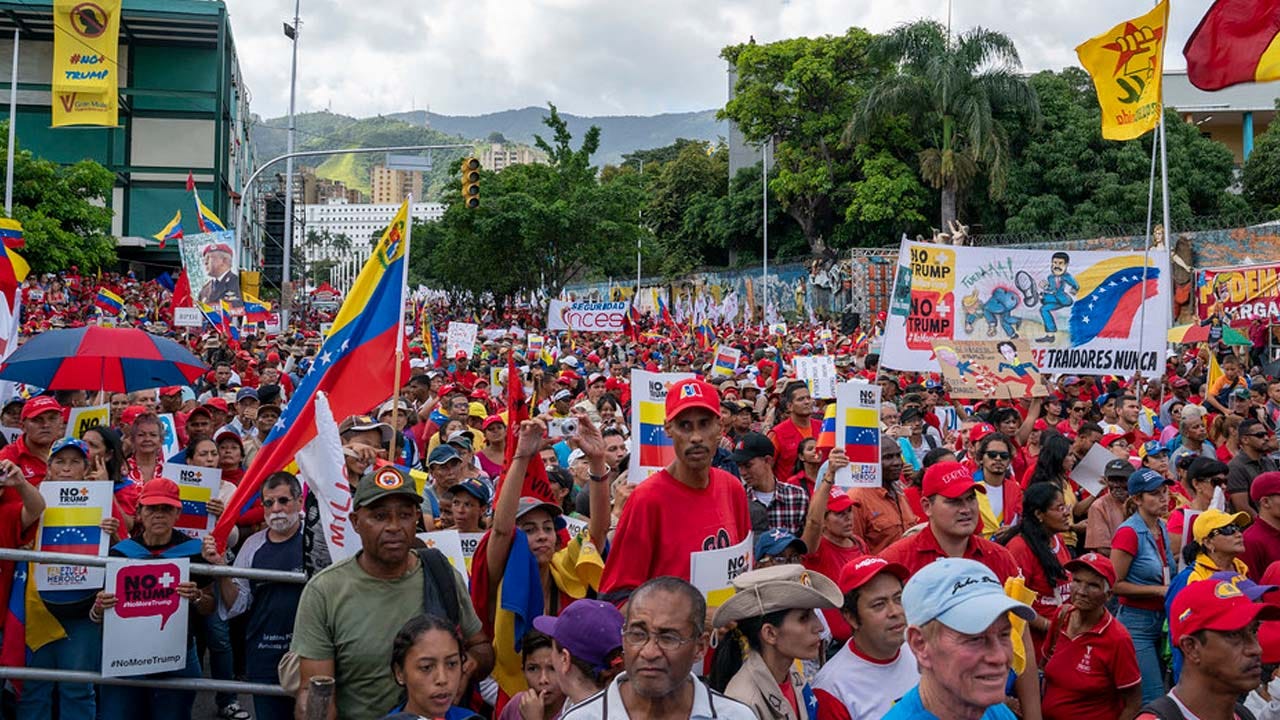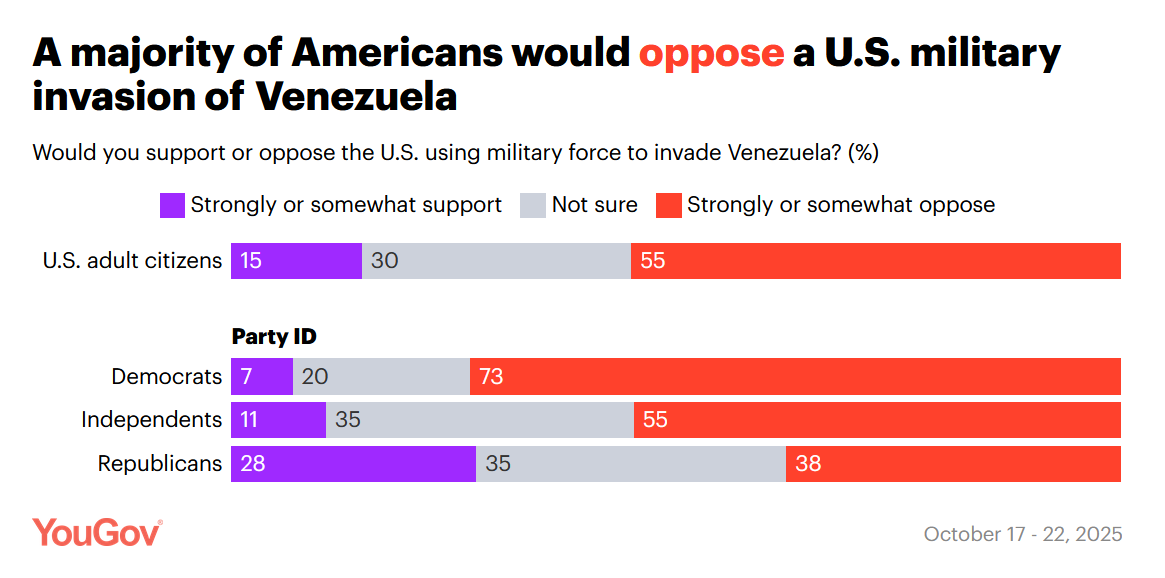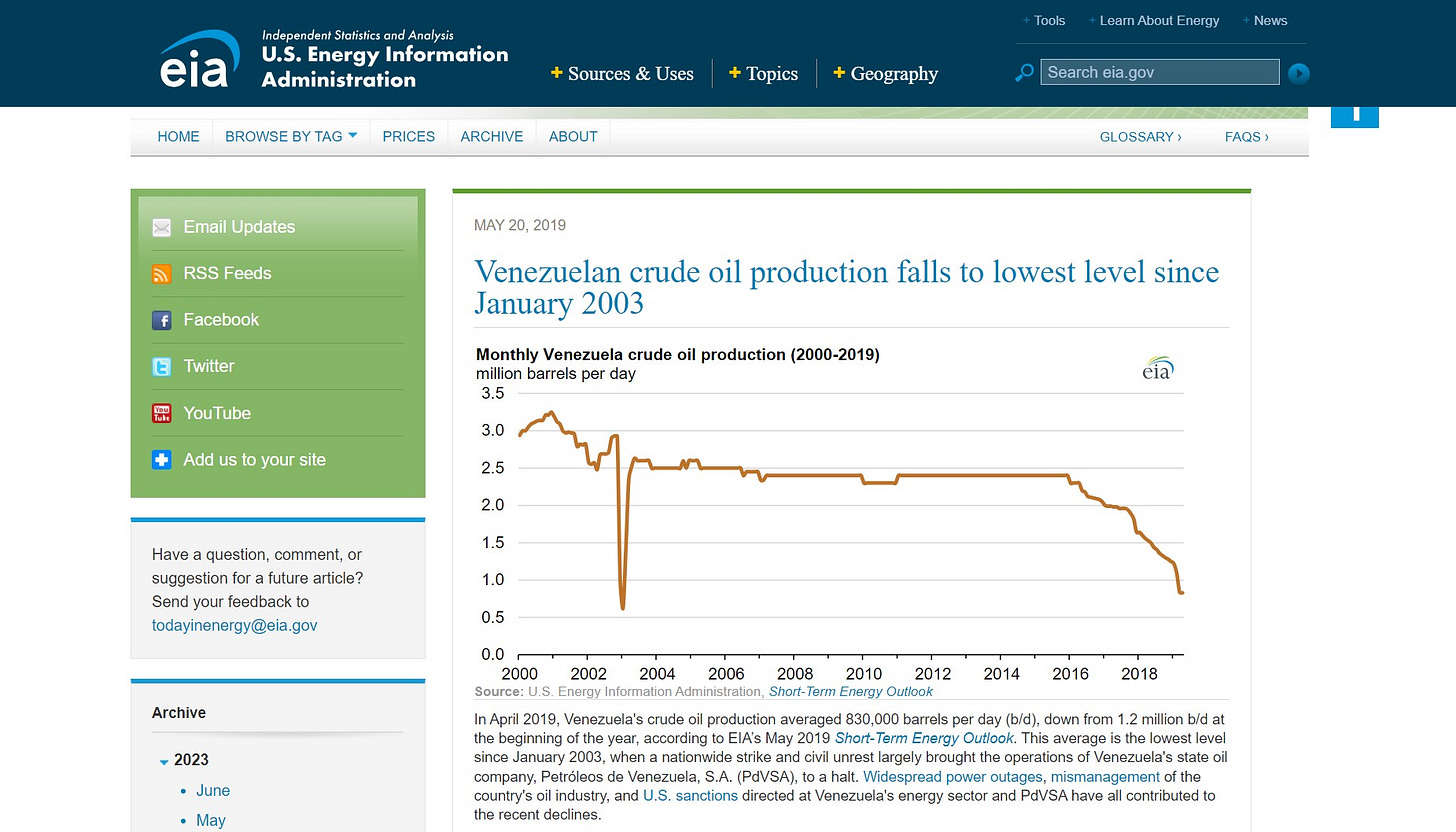What is really happening in Venezuela? US attacks and economic situation explained
An analysis of Donald Trump's attacks on Venezuela, the economic impact of US sanctions, and the similarities and differences with the successful Western regime-change war on Syria.

A Chinese journalist interviewed Geopolitical Economy Report editor-in-chief Ben Norton about the situation in Venezuela, and his analysis was translated into Chinese. The following were his original remarks in English:
QUESTION: Ben, you have traveled around Latin America extensively, including in Venezuela. I would like to hear your comments on Maduro. Is his government well supported by the Venezuelan people, or may he face a similar fate like Syria’s Bashar al-Assad? As you know, Trump is planning attacks inside Venezuela. So do you think Maduro’s government will fall like Assad’s?
MY ANSWER: There are indeed some parallels between Venezuela and Syria, but there are more differences than similarities.
Venezuela is very divided politically, but in general, the Bolivarian Revolution initiated by previous President Hugo Chávez and continued by current President Nicolás Maduro still has a lot of support from poor and working-class Venezuelans. Most rich people and elites are pro-US and anti-government. Many of them have left the country, but there are still some in Venezuela (especially in wealthy areas like Chacao).
In Venezuela, most people are tired of political conflict and violence, and they simply want stability. The right-wing opposition does not have many active supporters inside the country. Whenever they try to hold a protest, only a few hundred people show up. However, while they are small in number, they still have a lot of power concentrated in private companies, media outlets, and Western government-funded “NGOs”.
Maduro will not be overthrown by people inside Venezuela. The only possible way I think the Venezuelan government will fall is if the US military invades Venezuela and/or wages a direct war inside Venezuelan territory, bombing Caracas — like what the US did to Iraq, Libya, Yugoslavia, Panama, Grenada, etc. (although the tactics used were different in each of those wars).
Trump has already ordered the US military to kill dozens of Venezuelans in illegal, extrajudicial executions in international waters. Thus far, he has not launched direct attacks inside Venezuela, although he confirmed that he authorized the CIA to carry out destabilization operations inside the country.
There are reports that Trump plans to bomb targets inside Venezuela. This would be an extreme act of aggression, and is quite possible, even likely. I don’t think he will send US troops into Venezuela — it is certainly possible, but it would be very unpopular at home, especially among his so-called “MAGA” base.
If I were forced to make a prediction, I would say there is a 66% chance that the US military launches attacks inside Venezuelan territory, with missiles and/or airstrikes; and a 25% chance that US troops invade the country and try to take control of ports, airports, major roads, and/or oil fields.
Polls show that Trump’s war on Venezuela is very unpopular inside the US. A slight majority of Americans, 55%, would oppose a US invasion of Venezuela; whereas only 15% would support it. A clear plurality, 45%, oppose using the US military to overthrow President Maduro; while just 18% support this. However, public opposition has never stopped Washington before.
In fact, scientific studies show that public opinion has no impact on US government policy.
Economically, Venezuela has suffered extreme hardship under illegal US sanctions and an economic embargo, which has blocked Venezuela from accessing the US-dominated international financial system and prevented Venezuela from exporting its oil and fixing/updating its oil infrastructure, causing government revenue to shrink by a staggering 99% (according to the top UN expert on sanctions, the special rapporteur Alena Douhan).
However, Venezuela’s economy is in a better state today than it was during the previous US-led coup attempt in 2019-20, which caused hyperinflation. The inflation rate has fallen a lot. Real wages have risen. Food and everyday necessities are affordable. The economy has dollarized a lot, however, which erodes the monetary sovereignty of the Venezuelan government.
The latest US attacks will likely end up increasing support for the Venezuelan government, because it will make it clear that there are only two realistic options: either Maduro or a right-wing US puppet — like the US government-funded far-right coup leader María Corina Machado, whom Washington wants to put in power, and who has been open about the fact that she wants to privatize Venezuela’s massive oil reserves and sell off the country’s assets to US corporations.
One clear similarity between Venezuela and Syria was the economic warfare waged by the West.
The Syrian government fell in part because the US/EU “Caesar” sanctions had devastated the economy. Syria could not get access to hard currency, and thus had very high inflation. The Syrian military was unable to pay its officers and soldiers, so they were not willing to fight. There were also shortages of food and oil. Syria was blocked from accessing its oil and wheat fields, which were militarily occupied by the US.
One major difference is the Western-sponsored war on Syria, which started in 2011.
The Syrian state was significantly weakened by more than a decade of war. Moreover, Syria had been invaded by multiple foreign powers, including the US, Turkey, and Israel. Large parts of its territory were not under the control of the central government, but rather by extremist groups and mercenaries funded and armed by the US, Turkey, Israel, Saudi Arabia, the UAE, and Qatar.
The situation is Venezuela is not like that. There were violent coup attempts by US-backed far-right extremists in 2014 and 2017, but nothing close to the levels of violence seen in the war in Syria.
QUESTION: In Maduro’s first and second term, the economy was in very bad shape. Why it is now getting better?
MY ANSWER: The US sanctions on Venezuela started in 2015, when Obama declared Venezuela to be a supposed “national security threat”. The global price of oil also crashed from 2014 to 2016. Both factors caused huge economic problems in Venezuela.
The illegal US sanctions then escalated significantly under Trump in 2017. And in 2019, Trump imposed an economic embargo on Venezuela (like the illegal US blockade of Cuba, which has gone on for more than six decades, in violation of international law).
This means that Venezuela was not able to export oil, which was the source of the vast majority of government revenue. The UN special rapporteur on unilateral coercive measures, Alena Douhan, reported that Venezuela lost 99% of government revenue due to the US sanctions. The UN expert also emphasized that these unilateral US sanctions are illegal, violate the human rights of Venezuelans, and devastated the economy.
The US sanctions caused a significant shortage of dollars and other hard currency in Venezuela, which meant that the central bank was not able to stabilize the national currency, the bolivar. Moreover, there were enormous attacks by currency speculators based in the US, with the help of Florida-based black market groups like DolarToday. The central bank also tried to maintain a fixed exchange rate throughout these speculative attacks, which meant it bled the little hard currency it had to try to defend the bolivar. Together, these factors caused hyperinflation in Venezuela.
Another very important factor to consider is that the vast majority of the technology and oil infrastructure that had been used in Venezuela for the past century had been designed by Western companies. The oil industry had been nationalized by Chávez, but the technology it relied on was still the intellectual property of US and European corporations.
So the sanctions prevented Venezuela from repairing its oil equipment and buying the new machinery needed to maintain and modernize its oil infrastructure. This caused a huge fall in Venezuela’s petroleum output.
In fact, the US government’s Energy Information Administration (EIA) boasted in 2019 — during a US-sponsored coup attempt — that Venezuelan crude oil production had fallen to its lowest level since 2003 (following another US-backed coup attempt). The EIA even admitted that US sanctions were a factor that contributed to this significant decline.
The situation in the past few years has gotten better because Venezuela was able to replace some of its oil machinery with technology from Iran, Russia, and China. Technicians from Iran, Russia, and China also helped Venezuela to repair and update its oil infrastructure.
This meant that Venezuela was able to export more crude, primarily to China. Oil output today is still much lower than it had been before the US sanctions began in 2015, but it is slowly rising, and is now more than 1 million barrels per day, which is the highest level since the last US-led coup attempt, during Trump’s first term.
This means that Venezuela is now earning more hard currency, which it can use to stabilize its own currency and reduce inflation.
The economic situation has significantly improved in the past few years. In fact, inflation has been higher in Argentina, under its US-backed libertarian President Javier Milei, than it was in Venezuela.
QUESTION: Are there other Latin American countries that are helping or aiding Venezuela?
ANSWER: Cuba and Nicaragua have helped Venezuela. But they are very small and don’t have many resources, and are both suffering from illegal US sanctions as well. They are mostly providing political and diplomatic support.
The right-wing governments in Latin America are all extremely pro-US and anti-Venezuela. Many of the left-wing governments are more independent in their foreign policy, but they are afraid of getting too close to Venezuela, because of the threats by the US government, particularly the threat of secondary sanctions; and also because of right-wing backlash at home.
Venezuela’s neighbor Colombia has historically been the most loyal US ally in the region, and its government was dominated by wealthy right-wing oligarchs for decades. Today, for the first time, Colombia has a left-wing government, led by President Gustavo Petro.
Petro has publicly criticized the US and vocally opposed its attacks on Venezuela. In response, Trump imposed sanctions on President Petro and his family. This was a blatant act of aggression against Colombia’s sovereignty, and a clear example of US meddling in the country’s internal affairs. It was also obviously meant as a threat against other leaders in the region, so they don’t speak out and challenge the US war.
That said, Petro is still afraid of getting too close to Venezuela, because of the attacks by the right-wing media outlets inside Colombia, and because elections are coming up in 2026, and he doesn’t want his left-wing allies to be hurt.
US-backed right-wing forces are gaining influence in many parts of Latin America. The war against Venezuela is part of a larger strategy by the US empire to weaken left-wing anti-imperialist resistance, strengthen right-wing oligarchic groups that will serve US corporate interests, and impose US hegemony across the region.






Good overview providing context that attacks on Venezuela have been conducted by both the Democratic and Republican parties. (Incidentally driving them into the arms of Chinese, Russian, and Iranian allies.) Attempting to salvage the failing U.S. empire is a bipartisan project.
The nature of neoconservatism is, to quote economist Paul Wolfowitz in 1976, “…to stick the boot of American policy so deep into conflict that no protest could ever remove it”. The nature of an economic excuse to wage eternal Vietnam wars is to “drive the economic engines of a capitalist democracy” (sic). The failures of the 1975 establishment to offset social capital in the protest movement which decimated corporate power and profit has resulted in the march towards America First and a fire-tipped political movement ensuring the profit of war industries and the single market basis of death as a life support system to capitalism which is dying by the natural processes of finite planet and finite markets.
This world as we experience it now is a result of a resurgent corporate capitalism decidedly and insidiously set against human nature and nature itself.